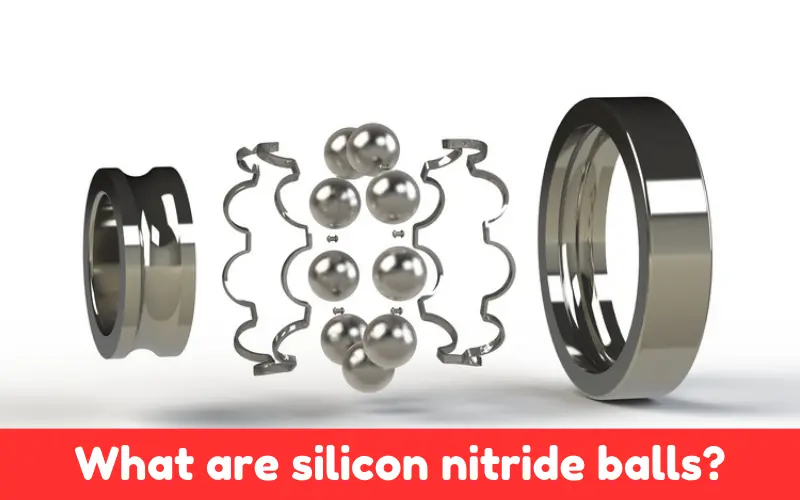Nowadays, on the 29th of January in 1886, a decisive creation in human history was launched. This is a historical event. The Karl Benz gasoline powered automobile invention was born in the calendar of the human era.
If we believe in the importance of this story behind the invention, we can also understand the huge impact motor vehicles had on the whole of human history.
There are new technologies introduced every year. This year, we have silicon nitride balls. This is not a new technology that the automotive industry has never encountered before, but it is a more popular and widely available option, so why? Silicon Nitride Balls and why major manufacturers are using it. What are silicon nitride balls?
That is the reason why the development of new car companies is one of the most important parts of each country’s economy.
In conclusion, almost every day, a lot of us are using cars as they are dependent not only on their need to drive but also on our motivation. The appearance of the first car was a life changing event in human history.
However, the types and technology being used in cars are evolving just as swiftly as the new technology implemented in vehicles that got underway around 2010, one of whose attributes include sustainability, connectivity, and safety.
Article Summary
What Are Silicon Nitride Balls?
Silicon nitride (Si₃N₄), or ‘ceramic,’ as it is called because of its solidity, is developed through mixing, milling, molding, sintering, cooling, and grinding to have high rigidity and highly desirable thermal properties.
Therefore, silicon nitride balls can be helpful in various types of industries where performance has to be outstanding, and materials that improve the life service have to be maintained.
They are also helpful for metal cutting tools, to develop valves and pumps that handle corrosive materials, and especially in high-end automobiles as well as sports and electrically powered vehicles.

Key Properties of Silicon Nitride Balls
High Strength and Hardness: Silicon nitride is significantly harder than steel, which gives it superior wear resistance.
Low Density: They’re about 60 percent lighter than their steel counterparts, which means lighter payloads for vehicles and better energy efficiency.
Low Friction: The consistent, ultra smooth surface of silicon nitride decreases friction between it and other teeth, reducing wear on surrounding components and making everything more efficient and long lasting.
Temperature Resistance: At 1,200°C, silicon nitride maintains its mechanical integrity, making it a designer’s dream for high performance automotive work.
Corrosion Resistance: Unlike steel, silicon nitride, a hard ceramic material, does not corrode, particularly in harsh locations where there is moisture, chemicals, or very high or low temperatures.
Which Agencies Use Them?
While the steel bearing retains a preference for the vast majority of manufacturers, the introduction of silicon nitride balls as an option for classic bearings appears promising, especially for those vehicles that require maximum efficiency and resistance to harsh conditions.
Despite its price, it is already employed by prestigious brands such as Tesla not only for its technological innovation but, above all, because it represents greater precision and reliability.
Other global companies who might wish to build upon this product in their designs, like Toyota and Honda (electric or hybrid cars), thanks to their resistance to friction or corrosion, are also producers of both hybrid and electrical vehicles.
However, they are also a much lighter material than steel, a property that improves fuel efficiency, reduces emissions, and allows operating at high velocity. It isn’t difficult to imagine Audi or BMW sports cars that incorporate silicon nitride balls.
These are just some of the benefits offered by silicon nitride to the world of automotive engineering.
As the development of this new technology progresses, it is bound to boost the durability and performance of cars greatly.
Therefore, the next time you consider your next auto, make sure to include the silicon nitride ball in your shortlist and discover how new technology can unlock exciting, new roads to a thrilling drive.
Why is Silicon Nitride Gaining Popularity in the Automotive Industry?
Silicon-nitride balls are an especially appealing solution for automotive manufacturers that need to meet the latest efficiency and performance requirements for several reasons:
1. Enhanced Fuel Efficiency and Reduced Emissions
Fuel efficiency is a big factor today. Think of the goals for electric vehicles (EVs) or even hybrid cars. Silicon nitride balls are lighter than steel, which helps to reduce vehicle weight. Lighter parts mean better fuel efficiency with traditional internal combustion engines, with smaller emissions and longer driving ranges with EVs.
2. Improved Performance and Durability
Such bearings from silicon nitride are able to run at higher speeds with lower friction, making them suitable for high performance vehicles or turbochargers, gears, or other components inside a transmission or an electric motor.
Furthermore, silicon nitride’s high hardness and wear resistance can produce bearings that have a long lifespan, meaning that they won’t have to be replaced as often and, consequently, maintenance costs will be reduced.

3. Increased Thermal Stability
Automotive parts of all kinds, such as those found in high performance or heavy duty vehicles, can be subject to extreme temperatures, where silicon nitride’s inherent ability to retain its strength and integrity at high temperatures can offer added value for applications subject to heat, such as engine components, turbochargers, and EV drive systems.
4. Better Resistance To Harsh Conditions
Those who are exposed to harsh environments either by being the underside of a car (think off-road driving) or in a high humidity environment welcome materials that can resist this corrosion and chemical damage.
Silicon nitride balls last longer than steel when exposed to a corrosive environment because they don’t react the same way to corrosion and chemical interaction as steel does.
Applications in the Car Industry
The use of silicon nitride balls is expanding across several key automotive applications:
Wheel Bearings
Silicon nitride is a newer kind of wheel bearing material that reduces friction, resulting in smoother rides, more durable bearings, and reduced energy consumption.

Turbochargers
The ultra fast rotation of turbochargers demands high temperature, high friction bearings for which silicon nitride balls are an excellent match.
Electric Motors
Silicon nitride is used in electric motors in EVs, which helps bring the energy used (and thus battery life and performance) down overall, thanks to its extreme efficiency and longevity.
Transmissions
Silicon nitride balls allow the driver and the output shaft to rotate freely within each other’s ends. As part of a transmission system that transfers tremendous amounts of power over great distances (i.e., your car’s drivetrain), this allows both smooth shifting and free operation, lengthening the life of the components in the process.
FAQs on Silicon Nitride Balls
What Makes Silicon Nitride Balls Better Than Traditional Steel Bearings?
Their superior properties are 20 times lighter, five times harder, one 100th as brittle, and somewhat more wear resistant and thermally stable than the current gold standard of bearing material. Steel makes these silicon nitride balls a material of choice. Their high strength and light weight not only contribute to minimizing friction at the contact points of a spinning motor but also reduce the weight of the vehicle, adding to fuel efficiency. At the same time, their effectiveness is enhanced by their thermal and corrosion resistance, making them particularly suitable for demanding applications such as turbochargers, transmissions, or electric motors that operate at high temperatures and in often harsh environments.
Are Silicon Nitride Balls More Expensive Than Steel Bearings?
The high price is a fillip of this material because the silicon nitride balls require sophisticated manufacturing, as well as steel bearings. Generally, longer term costs are certainly a consideration. The fact that silicon nitride balls are more durable than steel ones lightens the need for maintenance. It improves the fuel efficiency of the engine and the overall performance of the vehicles, which all make the price affordable.
How Do Silicon Nitride Balls Contribute To the Performance of Electric Vehicles (EVs)?
In electric vehicles, silicon nitride balls keep friction to a minimum in crucial precision components, such as electric motors and transmissions. This also helps improve EV energy efficiency and, in turn, the driving range of specific vehicles. Silicon nitride is also particularly well-suited in manufacturing applications where greater strength and reliability under thermal stress are paramount, as it can withstand the high speed and high temperatures of EV powertrains.
Conclusion
Silicon nitride balls are the future of car manufacturing, with reduced friction, increased lifespans, and fuel efficient vehicles.
As automakers evolve to meet the challenges of consumer demands and the need for an efficient car, silicon nitride is a material of the future.
Their properties to reduce friction and create lighter lights that can withstand higher temperatures and be less exhausting in fuel consumption are some things that car manufacturers are focusing on in order to revolutionize automobiles.
